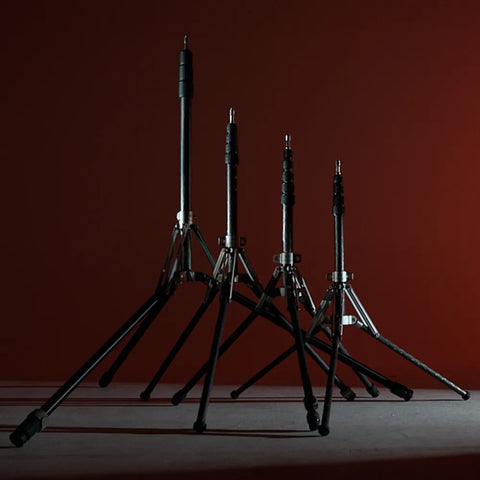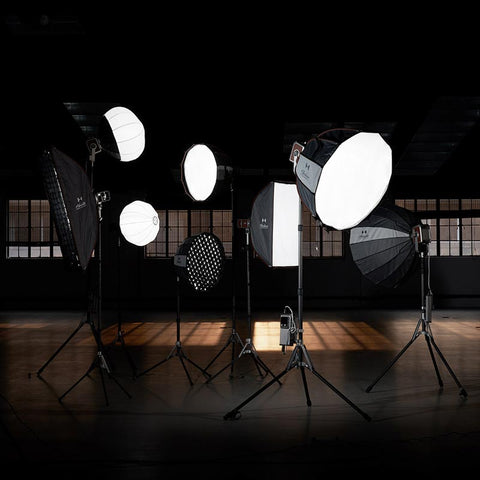
There’s a certain look in a powerful portrait, a mix of depth and emotion that feels timeless. Often, the secret to that look is light—specifically, a classic style known as Rembrandt lighting. It’s a technique that uses shadow and light to sculpt a person’s features, adding a dramatic quality that can turn a simple photo into something truly memorable. This guide walks you through how to create that iconic look yourself.
The Art and Appeal of Rembrandt Lighting
Named for the legendary painter who used it to make his subjects practically breathe on the canvas, Rembrandt lighting is all about one distinct detail: a small, inverted triangle of light on the cheek that’s mostly in shadow. This triangle appears when the shadow from the nose stretches down to meet the shadow along the cheek, creating a pocket of light just under the eye.
So why is this one pattern so special? Because it does what flat, boring light can’t: it creates dimension. By letting shadows define one side of the face, you’re essentially carving out the jawline and cheekbones, giving the portrait a three-dimensional feel. The play between the bright and dark areas adds a moody, sophisticated character to the image. It’s a go-to for photographers who want to create portraits with real emotional weight and a classic, artistic flair.
How to Set Up Rembrandt Lighting in 5 Easy Steps
The great news is you don’t need complex equipments to get this look. A single main light, such as the Max 80, and a little know-how are all it takes.



- Regular price
- Sale price
- from $995.00
Step 1: Positioning Your Main Light
First, get your subject settled. Your main light source, or key light, goes off to one side of your camera. A good way to visualize this is to picture a clock face with your subject at the center. If you’re standing at 6 o’clock, your light should be somewhere around 4 or 8 o’clock. Have your subject look toward the camera, slightly away from the light.
Step 2: The 45-Degree Rule of Thumb
The angle of your light is key. A solid starting point is to place the light at roughly a 45° angle to your subject’s face. This is the angle that casts the nose’s shadow downward to form that signature light triangle on the opposite cheek. Every face is different, so you might need to tweak it a bit, but starting at 45° will get you very close.
Step 3: Height Matters
Just as important as the angle is the light's height. You need to position the light source above your subject’s eye level, pointing down at about a 30° to 45° angle. This downward direction is what creates the shadows that define the style. If the light is too low, you get that unflattering "flashlight under the chin" look. Too high, and the shadows under the eyes and nose will look long and harsh.
Step 4: Soften for Soulfulness
The quality of your light has a huge impact on the mood. For portraits, softer light is usually more flattering because it smooths out skin and creates gentle shadows. This is where a modifier like a softbox is your best friend. A model like the Qucik Release Softbox 24"takes the harsh glare from a bare bulb and diffuses it into a broad, soft source that wraps beautifully around your subject. As a rule of thumb in light for photography, the bigger the light source is relative to your subject, the softer it will be.



- Regular price
- Sale price
- $426.00
Step 5: The Final Check
Now for the final check where it all comes together. Look closely at your subject’s face. Do you see the triangle of light on the shadowed cheek? It should be about the same width as the eye and no longer than the nose. If it’s not quite right, make small adjustments to the light’s angle and height until it clicks into place. Also, look for the catchlights—the little reflections of your light source in their eyes. A single catchlight in the upper part of each eye brings them to life.
Beyond Technique: Directing for Authentic Emotion
A perfect lighting setup is just the start. The real power of a portrait comes from the emotion of the person in it. The moody feel of Rembrandt light works beautifully with thoughtful, strong, or introspective expressions. To get there, talk with your subject. Don't just pose them; connect with them. Ask about something they're passionate about. Give gentle directions like, “Tilt your chin down just a touch,” or “Let your eyes follow the light.” Your job is to create a space so comfortable they can let their guard down, allowing their real personality to come through for the camera.
A Legacy in Light
Rembrandt lighting is more than just a technical setup; it’s a way of seeing. Learning to use it gives you a powerful tool for creating portraits that people don’t just see, but feel. It teaches you to shape with shadow and paint with light, adding a timeless elegance to your work and turning a simple photo into a compelling piece of art.
3 FAQs About Rembrandt Lighting
Q1: Do I Need a Fill Light for Rembrandt Lighting?
Not always. The classic look is achieved with just one light. A fill light or reflector is an optional tool used to control how dark the shadows get. It all depends on whether you’re going for a high-contrast, dramatic look or something a bit softer.
Q2: Can This Lighting Be Used for Group Photos?
It’s tough. Rembrandt lighting is really tailored to an individual’s face, so getting it right for multiple people at once is tricky. It’s best suited for single portraits where you can fine-tune the light for one person.
Q3: Does My Subject’s Face Shape Matter?
It does, but you can make it work for anyone. People with higher cheekbones or stronger jawlines often catch the light perfectly for this style. For other face shapes, you just need to make small adjustments to the light's position to get that beautiful triangle to appear.





